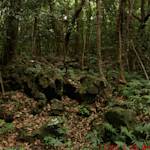Atlantic Forest
2023 CE • Brazil, Argentina, Paraguay
"The Atlantic Forest runs along the eastern coast of Brazil, stretching inland into Argentina and Paraguay . . . This forest is also one of the richest natural areas on the planet, filled with iconic species like jaguars, sloths, tamarins, and toucans. Just 1 hectare of the Atlantic Forest can support 450 species of trees. Seven percent of the world’s plant species and 5% of the world’s vertebrate animal species are found there . . . New species are being documented in the Atlantic Forest all the time. Since 1990, more than 30 mammal species, nine bird species, and about 100 frog species have been discovered there. The forest also provides other important natural resources, including clean air and climate regulation, soil protection, pollination, food, medicine, and drinking water. In fact, 60% of Brazil’s population relies on water from the Atlantic Forest. Despite the importance of this forest, it is one of the most threatened in the world. For the past 500 years, humans have changed the forest landscape with infrastructure development, agriculture, and tree plantations. Roughly 12% percent of the original forest in Brazil is left, much of it in small, unconnected fragments."
"What is the Atlantic Forest and why do we need to save it?," World Wildlife Foundation.
Image: Spouse of Leonard G., Public domain, via Wikimedia Commons


Learn about Maya Lin’s fifth and final memorial: a multi-platform science based artwork that presents an ecological history of our world - past, present, and future.

Discover ecological histories and stories of former abundance, loss, and recovery on the map of memory.

Learn how we can reduce our emissions and protect and restore species and habitats – around the world.

See how art can help us rethink the problems we face, and give us hope that each one of us can make a difference.

Help make a global memorial something personal and close to home. Share your stories of the natural world.


